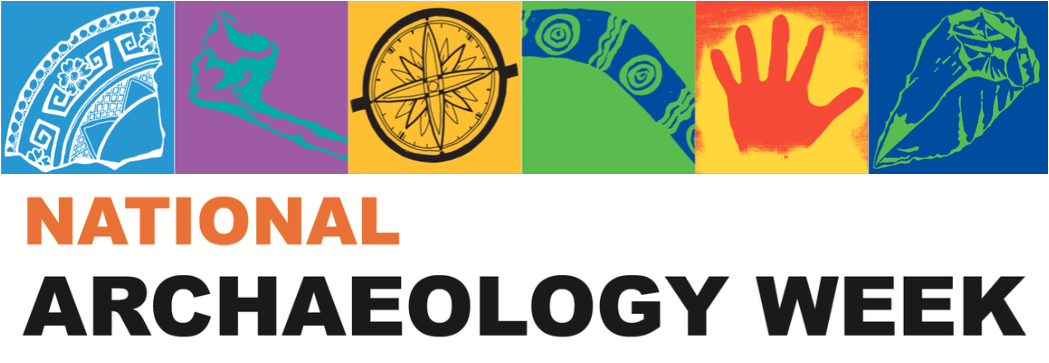For National Archaeology Week the University of Melbourne will be presenting the work of six of our postgraduates, showing the depth and innovation of our researchers at a time when opportunities for field work are severely limited. The six speakers will be giving short presentations on the following topics:
The Hellenic Museum Digitization Project (Thomas Keep)
A partnership supported by the federal government's graduate research internship program, this project works towards creating a virtual catalogue of digital surrogates of the Hellenic Museum's material collection. Using photogrammetric modelling, digital replicas are created from Bronze Age Cypriot pottery, classical Magna Graecian red figure ware, Roman architectural reliefs, and sunken Greek helmets, with the view of creating a shareable and globally accessible virtual museum.
The Bronze and Early Iron age occupation of South Montiferru and North Campidano Valley (Laura Pisanu)
The south Montiferru and the North Campidano valley are two regions that were densely inhabited over the Bronze and Early Iron age (1650 – 900 BC) when the so-called Nuragic communities built monuments, such as nuraghe towers, and manufactured artefacts well-distinguished in the Mediterranean scenario. In my project, I plan to better understand and illustrate what factors might have affected settlement dynamics of Nuragic communities settled in south Montiferru and north Campidano through GIS and comparative analysis of data collected during fieldwork and archival research. These approaches may significantly increase our knowledge regarding organisation and interaction of Nuragic communities in Sardinia and a wider Mediterranean setting.
Fara South - Re-Examining a Century-Old Excavation (Paula Phillips)
Fara South in southern Israel was excavated in the late 1920s before subsequent field work at a larger site nearby yielded a richer collection of artefacts, and relegated the Fara finds to a series of dusty basement shelves, largely unpublished and very much unknown. Yet, in effectively what remains a 3,500 year old cold case; namely what happened in the Eastern Mediterranean during the Middle Bronze to early Late Bronze period (1950-1550BCE)? Is possible that the old excavations at Fara South might be able to provide us some clues. This talk takes a brief look at where the 're-examining Fara' project is currently at, and why sometimes, basement fieldwork can be very valuable.
A spatial analysis of griffins in the Late Bronze Age east-Mediterranean (Emily Simons)
Griffins are a prevalent motif in the Late Bronze Age and are typically interpreted as associates of divine beings or more earthly powers. This project aims to illustrate how different spaces and settings can inform the roles of objects as indicators of power, communal purpose, and importance. My study maps the find locations of Late Bronze Age griffins across the east-Mediterranean to investigate distribution patterns using legacy data and GIS.
The Road to Ritual: Philistine Architecture and Material Culture (Madaline Harris-Schober)
The lack of universal definition and methodology for the identification of cult and ritual practices in the archaeological record has led to the misidentification of Philistine ritual buildings. The future of understanding Philistine ritual and cult lies deep in comparative analysis; therefore, this thesis and its associated research aims to synthesise and critically analyse past studies with the goal of creating a new methodology that can be applied directly to our understanding of the Philistines.
Interdisciplinary Engagement with Bab adh-Dhra’ Artefacts through Object-Based Learning (Gemma Lee)
The educational uses of Early Bronze Age pottery from the Jordanian site of Bab adh-Dhra’ are manifold. This versatile collection has been employed in classes focused on Near Eastern archaeology, ethics, collections management, religious studies, art history and ceramics. My research focusses on the evaluation of the Bab adh-Dhra’ material in teaching and learning outcomes. These outcomes were measured through student questionnaires, distributed at the end of each OBL session, and interviews conducted with class facilitators. This presentation will report on outcomes from this research which demonstrate the efficacy of OBL as pedagogical practice and the effectiveness of the Bab adh-Dhra’ material as an interdisciplinary educational tool.
When: 1-2pm (Melbourne time / AEST), Monday 17 May 2021
Where: online via Zoom with the link: https://unimelb.zoom.us/j/83455441913?pwd=Qkx1WlpMNmVLN2trR0VYTzdEc0puUT09
Meeting ID: 83455441913 Password: 094571
For more information: https://arts.unimelb.edu.au/ancient-medieval-and-early-modern-studies/seminars-reading-groups/ancient-world-seminar
